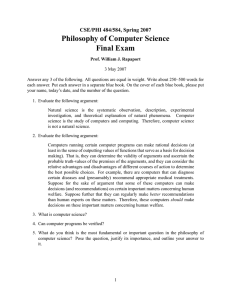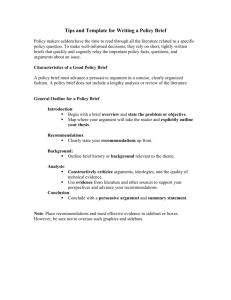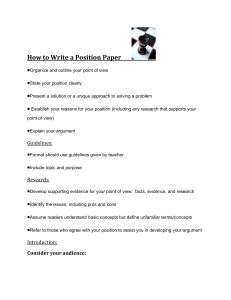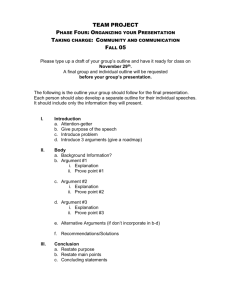Critical and Analytical Thinking LONDON’S GLOBAL UNIVERSITY
advertisement
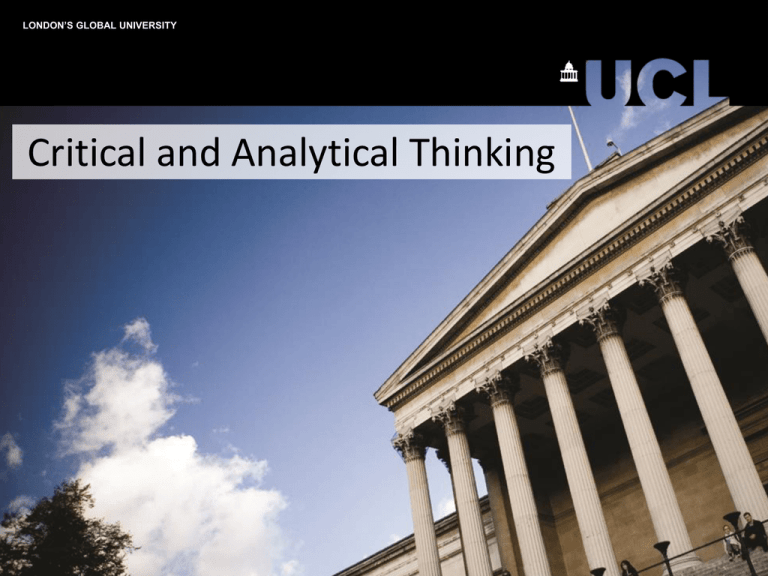
LONDON’S GLOBAL UNIVERSITY Critical and Analytical Thinking Critical & Analytical Thinking • Key part of university study – developed as you study • BUT, Admissions Tutors will be looking for evidence of these skills in your application and at interview • Demonstrates wider knowledge and deeper understanding of subject What is Critical and Analytical Thinking? • Word ‘critical’ has positive and negative meanings – does not mean just criticise • Weigh up the arguments for and against • Look deeper into what is being said and why it is being said • Question what you read • Identify strengths and weaknesses • Evaluate what is being argued – do you agree with it? Barriers to Critical and Analytical Thinking • Misunderstanding of criticising • Our reasoning skills are not objective – we are biased ourselves • Reluctance to criticise experts • Reluctance to criticise the ‘norm’ • Not reading deeply enough around a subject – surface knowledge • Wanting to know the right answer How to think critically and analytically • Form a set of questions to help you think more deeply about what you have read • Apply these questions and similar ones to all of your arguments and essays to encourage you to question why things are the way they are • Use your answers to develop your academic argument Question Bank Assess your sources • What is the source? (Web, academic journal, newspaper…) • What are the strengths and limitations of this source? Identify bias • Does the author have a hidden agenda? • What is the purpose of the writing? • Does their writing reflect a political viewpoint? • Who might disagree with the writer? Evaluate evidence • What evidence/examples does the writer use? • How reliable or useful is the evidence? • Does it support the argument? • Is the evidence up-to-date? • Do they make any assumptions? Consider their argument • What is the main argument? • What statements/evidence in the article strengthen or weaken the argument • Think about the viewpoint in relation to the bigger picture – stand back • Compare the same issue from the point of view of other authors – do their views differ? Draw conclusions • Understand why authors have arrived at different conclusions • Argue why one viewpoint is preferable to another • All ideas and arguments must be supported by evidence to add credibility • Question your own assumptions and biases as well as those of the author


